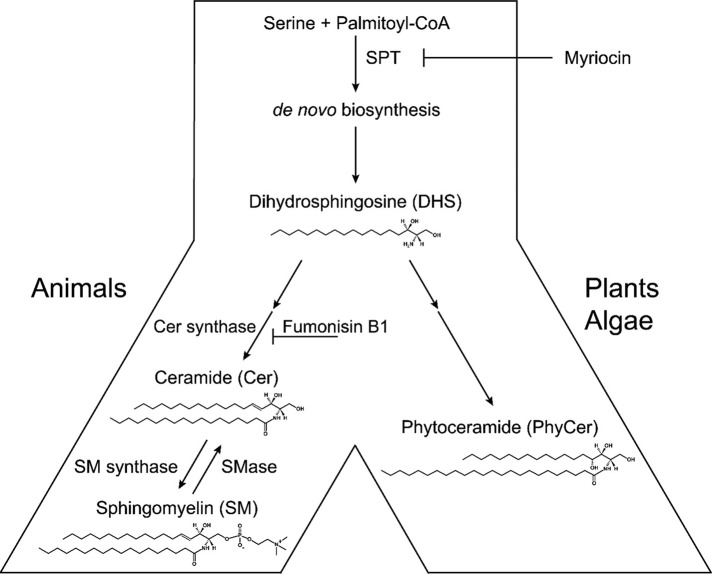FIGURE 1:
Sphingolipid metabolism in animals, plants, algae, and fungi. In animals, plants, and algae, de novo biosynthesis of ceramide and phytoceramide is initiated by conjugation of serine with palmitoyl-CoA (other activated fatty acids are possible but less frequent), a reaction catalyzed by serine palmitoyl transferase (SPT) and inhibited by myriocin. After another reaction, the intermediate dihydrosphingosine (DHS) is synthesized, which is then converted to ceramide via ceramide synthases (inhibited by fumonisin B1) in animals and phytoceramide in plants, algae, and fungi. In animals, ceramide can be converted to sphingomyelin (SM). In the cell membrane or endocytic vesicles, ceramide can be rederived from SM by hydrolysis catalyzed by sphingomyelinases (SMases). Plants, algae, and fungi do not synthesize sphingomyelin but instead inositolphosphorylsphingolipids (not shown).

